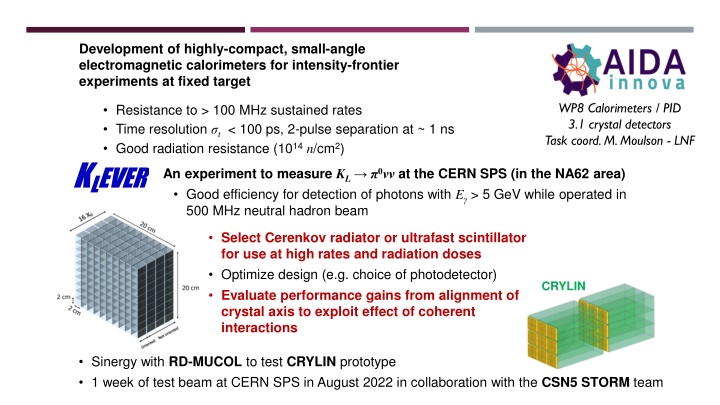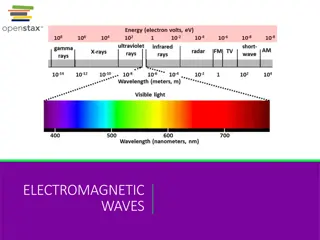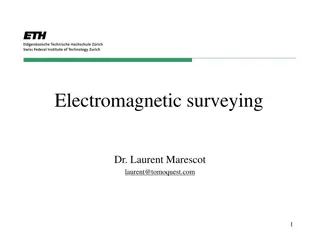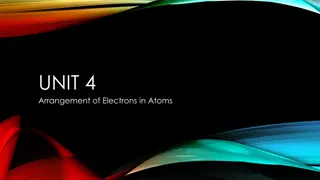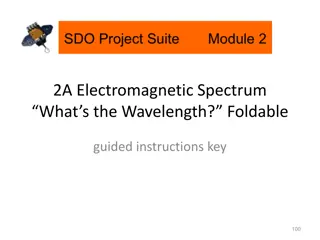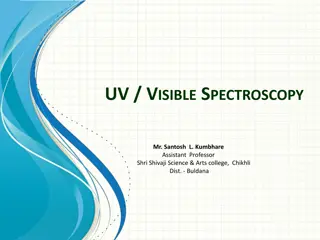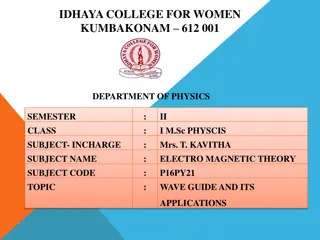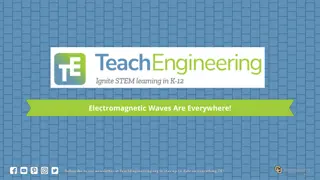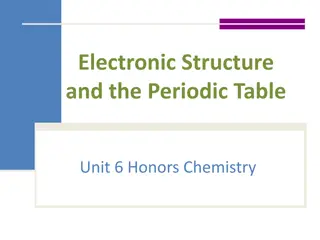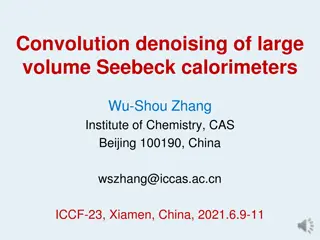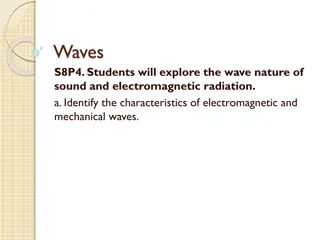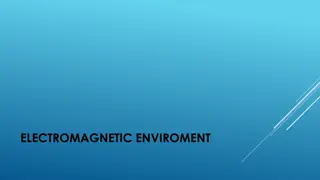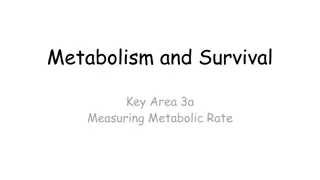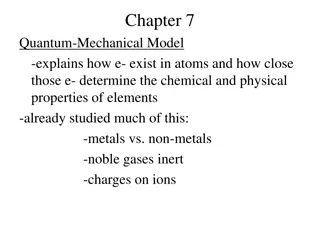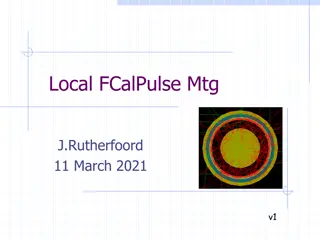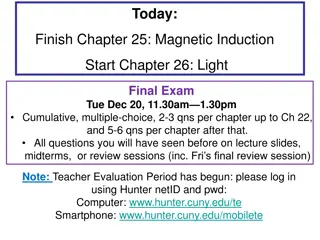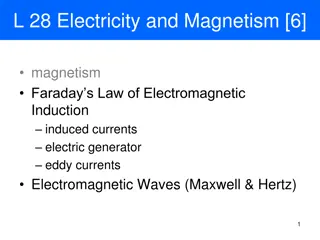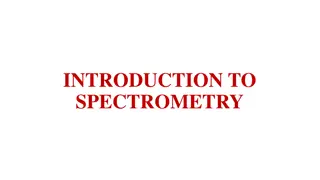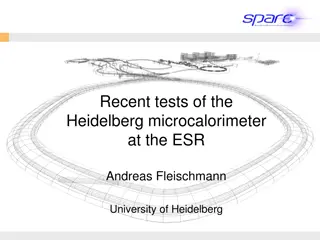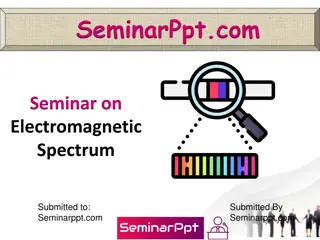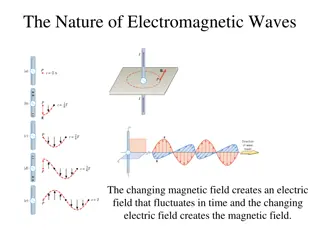Development of Highly-Compact Electromagnetic Calorimeters
Highly-compact small-angle electromagnetic calorimeters are being developed for intensity-frontier experiments, focusing on efficient detection of photons and high radiation resistance. Tasks include testing crystal detectors, optimizing design choices, and evaluating performance gains. Projects involve synergy with RD-MUCOL and collaborations for future colliders. Activities planned for 2023 include irradiation tests for target resistance evaluation, crystallographic characterization, and design of alternative radiator materials like Diamond and Iridium.
Download Presentation

Please find below an Image/Link to download the presentation.
The content on the website is provided AS IS for your information and personal use only. It may not be sold, licensed, or shared on other websites without obtaining consent from the author.If you encounter any issues during the download, it is possible that the publisher has removed the file from their server.
You are allowed to download the files provided on this website for personal or commercial use, subject to the condition that they are used lawfully. All files are the property of their respective owners.
The content on the website is provided AS IS for your information and personal use only. It may not be sold, licensed, or shared on other websites without obtaining consent from the author.
E N D
Presentation Transcript
CRYSTALS FOR FORWARD CALORIMETRY Development of highly-compact, small-angle electromagnetic calorimeters for intensity-frontier experiments at fixed target WP8 Calorimeters / PID 3.1 crystal detectors Task coord. M. Moulson - LNF Resistance to > 100 MHz sustained rates Time resolution t < 100 ps, 2-pulse separation at ~ 1 ns Good radiation resistance (1014n/cm2) KLEVER An experiment to measure KL 0 at the CERN SPS (in the NA62 area) Good efficiency for detection of photons with E > 5 GeV while operated in 500 MHz neutral hadron beam Select Cerenkov radiator or ultrafast scintillator for use at high rates and radiation doses Optimize design (e.g. choice of photodetector) Evaluate performance gains from alignment of crystal axis to exploit effect of coherent interactions CRYLIN Sinergy with RD-MUCOL to test CRYLIN prototype 1 week of test beam at CERN SPS in August 2022 in collaboration with the CSN5 STORM team
Preventivi RD-MUCOL 2023 Ferrara
Hybrid crystal-based positron source (in synergy with FCCee) Option for FCCee Option for LEMMA 4
Hybrid crystal based positron source for future colliders Project in CHART: Collaboration between PSI and CERN with external partners: CNRS-IJCLab (Orsay), INFN-LNF (Frascati), SuperKEKB (interested in the P3 project) observer, INFN-Ferrara radiation from crystals Attivit in corso Progettazione e realizzazione targette cristalline di tungsten; Test di irragiamento a MAMI con fasci intensi di elettroni contributo ad IPAC 2022; Partecipazione a test calorimetro CRYLIN per Muon Collider in sinergia con AidaInnova e NA62/KLEVER. Comparable e+ rate at the target exit, but energy deposited in the target and PEDD (Peak Energy Deposition Density), thus, are 34% and 63% respectively lower in the case of the hybrid scheme 5 L. Bandiera et al., minor revision on EPJC, Crystal-based pair production for a lepton collider positron source
ATTIVIT PREVISTE PER IL 2023 Continuazione ed ottimizzazione dei test di irragiamento delle targhette per valutarne la resistenza; Caratterizzazione cristallografica delle targhette prima e dopo l irragiamento; Progettazione e test di altri materiali (Diamante e Iridio) come radiatori alternativi al tungsteno sui fasci di elettroni al CERN PS&SPS; Continuazione test del calorimetro CRYLIN in sinergia con le attivit di AidaInnova e NA62,con studi di cristalli Cerenkov PbF2 orientati.
ANAGRAFICA FERRARA 2022 Ruolo Ricercatrice PO FTE 10% 20% Laura Bandiera (RL) Vincenzo Guidi Richieste finanziarie ancora in via di definizione
